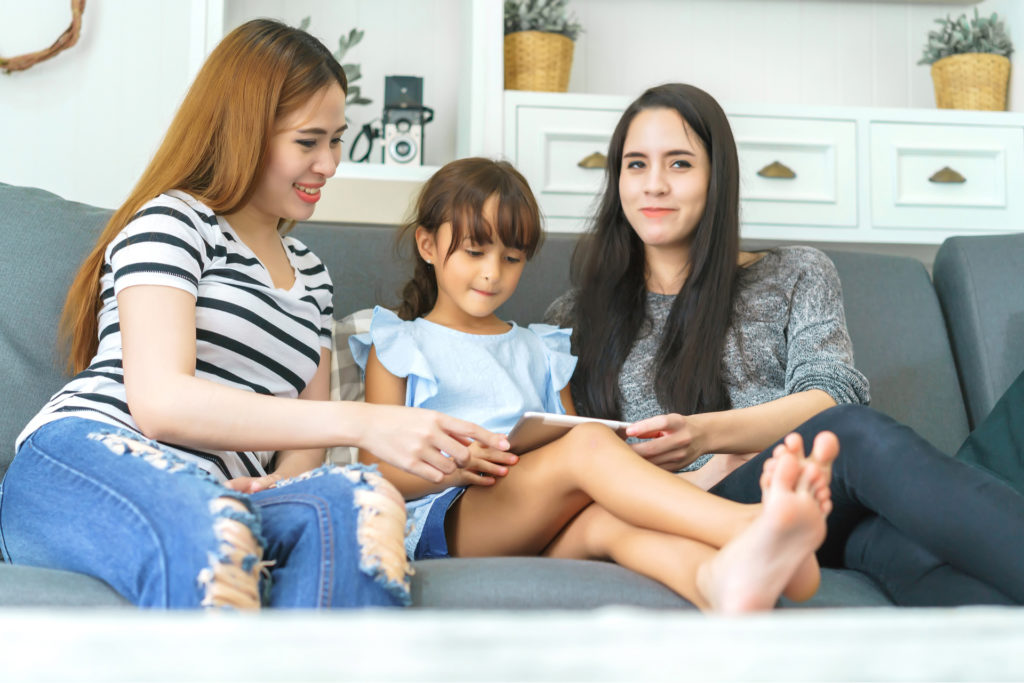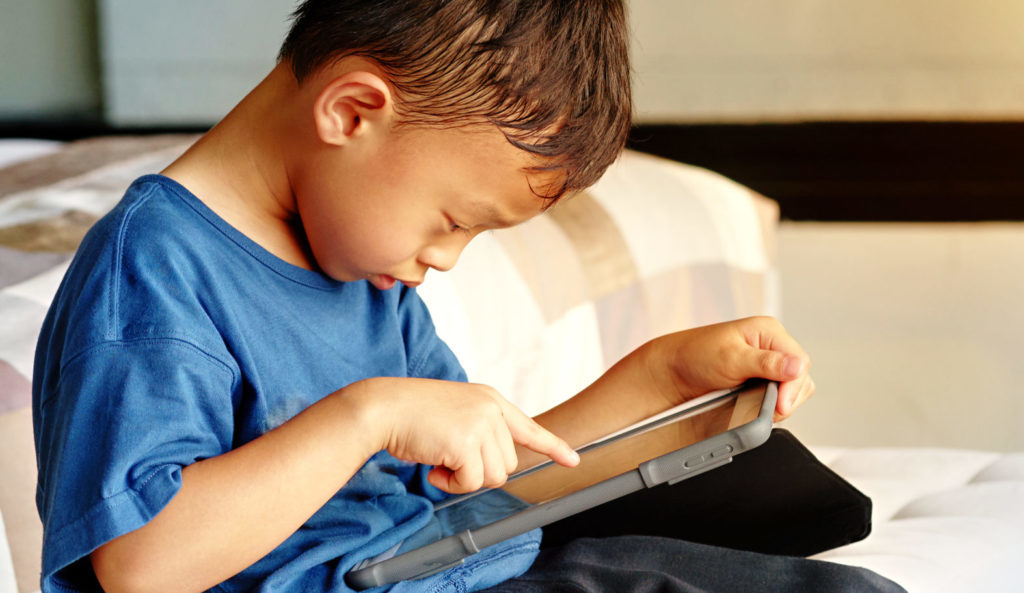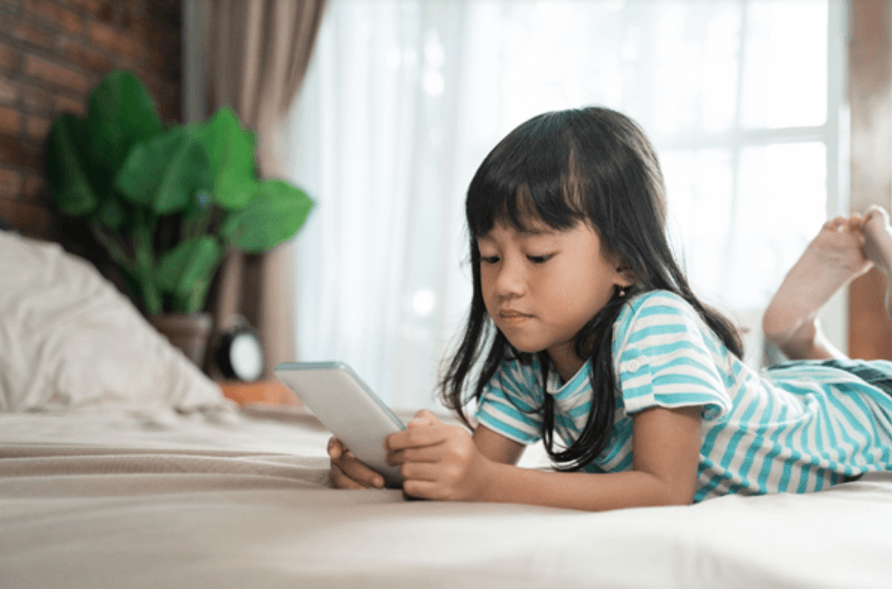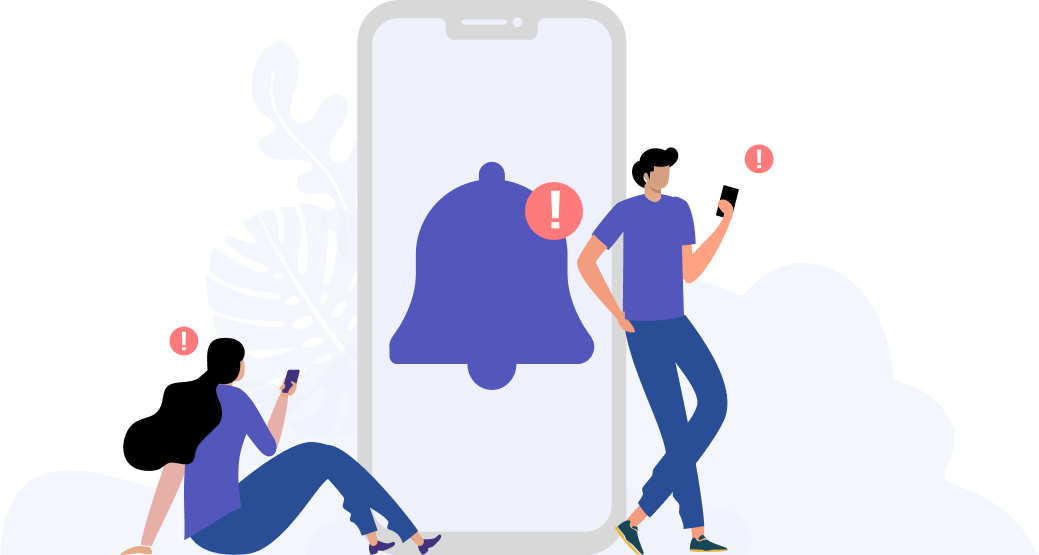3 Signs Your Child Is Addicted To Their Screen

We all want our kids to grow up healthy and happy. That’s why we make them wear bike helmets, stop them from eating too much junk food and make sure they go to bed early.
However, when it comes to technology, protecting our kids feels much harder.

Smart devices are wonderfully practical and convenient, but like any good thing, they have inevitable drawbacks when used too much. Using your phone for more than two hours a day can increase the chances of developing short-sightedness, digital eye strain, and even screen addiction.
While it’s easy to tell our kids to get off their phones, it’s much harder to enforce good screen use habits. It’s often difficult to gauge how much time kids spend on their devices without monitoring them 24/7. So how do you know where to draw the line? How much screen time is too much? To start with, it’s good to get an understanding of how much time they are spending online. You can look out for signs in their behavior, or simply track their screen time with a parental control app. Here’s how.
3 signs your child is spending too much time on their smart devices:
1. Eye rubbing
If you notice your child rubs their eyes regularly, it is likely they have been spending too much time online. When we stare at a screen for prolonged periods of time, we tend to open our eyes more and blink less. This causes them to become dry and sore and can even lead to digital eye strain (or DES). Eye rubbing is a telltale sign that your child has been using their screen too much and needs to switch off.
2. Fatigue
If your child regularly complains about not getting enough sleep, they could be using their smart devices too late at night. The blue light emitted from phone screens suppresses the release of the sleep hormone melatonin, tricking the brain into thinking it’s still daytime. To avoid this, it may help to enforce a curfew an hour before bedtime, or download a parental control app such as plano. plano has a blue light filter* which can come in handy to help your kids get to sleep earlier and avoid insomnia.

3. Their phone says so.
The plano app can also track your child’s screen use and remind them when it’s time to take a break or switch off for the day. You can access your child’s screen time data from your own phone by downloading the app onto your device. Or, if you want to encourage your kids to take some initiative, plano’s point-rewards system can help them learn to switch off on their own. plano rewards your child with points whenever they display good screen behavior (e.g. if they use their device for less than 2 hours in a day). These points can be used in the plano shop to request fun, device-free activities- a great incentive to get your child involved in the process!
Better late than never.
If you do notice your child has developed a not-so-healthy relationship with their smart devices, don’t fret! Screen addiction is a very common phenomenon in today’s world. One study in 2016 found that 62% of Singaporeans admitted they were addicted to the Internet [1].
The best way to combat screen addiction is to start now! Establishing a healthy relationship with technology at a young age can help benefit them well into the future as they grow up in an increasingly digitized world. And remember, you’re not alone! plano’s in-built systems can help teach your kids how to develop and maintain good habits towards technology in a fun and simple way!
References
[1] Hicks, Robin. (2016). 62% of Singaporeans admit they’re addicted to internet, media habits being passed on to kids. Retrieved 18 July, from mumbrella.asia
Tools Designed for Healthier Eyes
Explore our specifically designed products and services backed by eye health professionals to help keep your children safe online and their eyes healthy.





